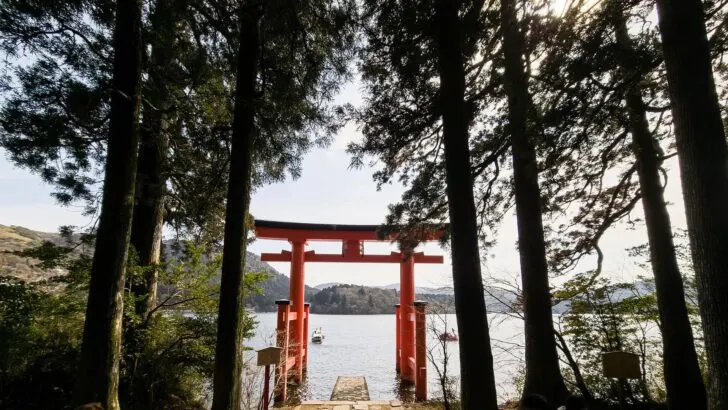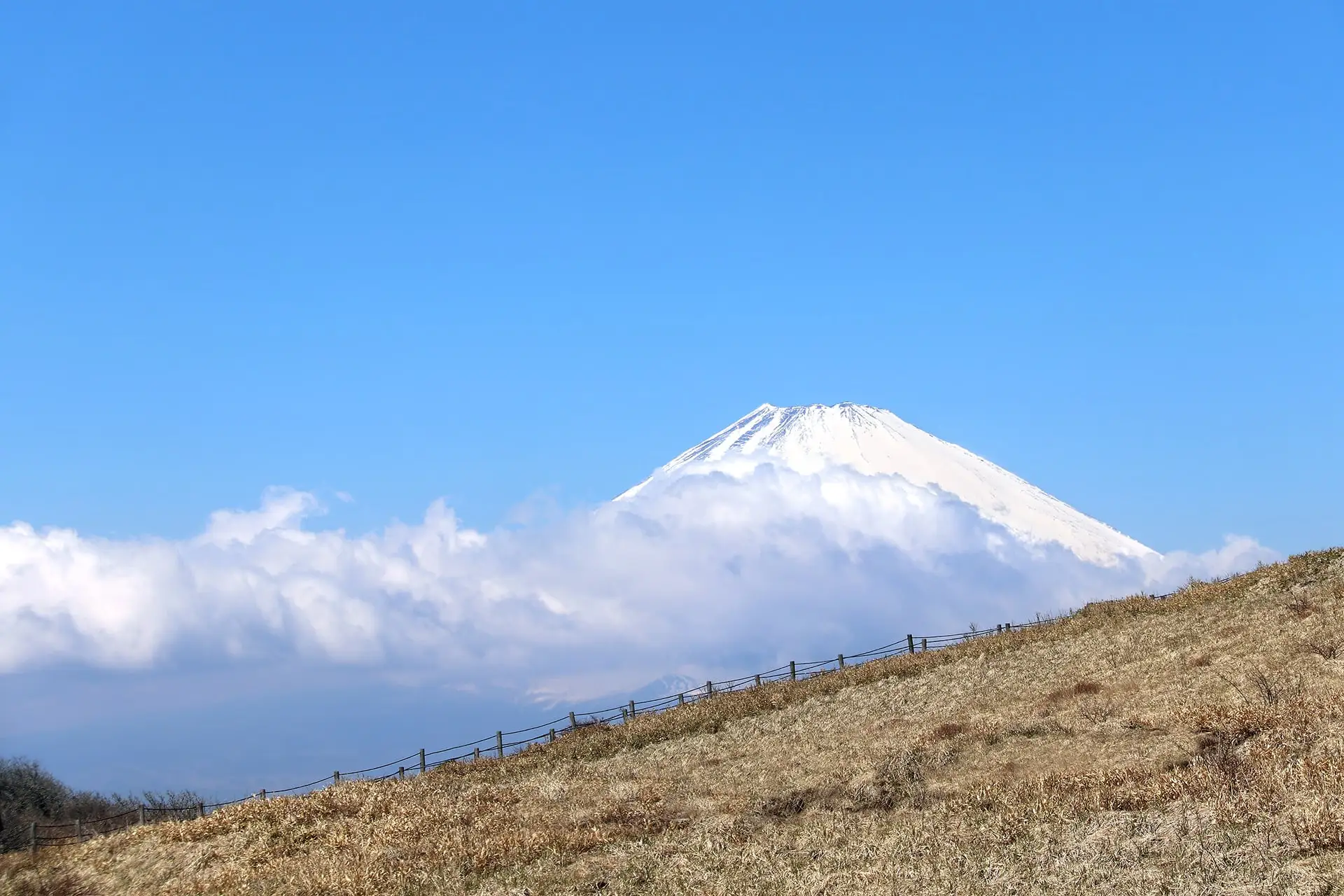Mt. Fuji stands as an iconic symbol of Japan. With its snow-capped peak and symmetrical cone shape, this legendary mountain has drawn tourists to the country for as long as we can think of.
Mt. Fuji is not only the highest mountain in Japan but also a UNESCO World Heritage Site. The mountain holds a special place in the hearts of the Japanese people. Revered as a sacred site, it has long been regarded as a symbol of national identity and spiritual significance.
The mountain is located in the beautiful Fuji-Hakone-Izu National Park, a park with lush forests, crystal-clear lakes, and vibrant flora that is even more captivating when it changes its colors with the seasons.
Facts about Mt. Fuji
Where is Mt. Fuji located
Mt. Fuji is located about 100 kilometers southwest of Tokyo and is often visited as a day trip from the capital.
The 2 most visited regions from where the mountain can be seen is the Fuji Five Lakes region and Hakone.
Fuji Five Lakes is located on the Northern slopes. This is also the region we recommend. We have taken many beautiful pictures here in which the mountain shines majestically in the background.
Hakone is further away and to the south of Mt. Fuji. The fact that this is an onsen town may have something to do with its popularity. We like Hakone, it’s a beautiful region with lots of green. The views on Mt. Fuji from Hakone are fabulous but not as spectacular as those from the Fuji Five Lakes region.
We visited both regions with good weather and therefore had a good view of the mountain from both sides. However, because Hakone is further away, there is a greater chance that Mt. Fuji is hidden behind the clouds.
Best Time To Visit Mount Fuji
Unfortunately, Mount Fuji is often hiding behind clouds. Of course, you can never predict what the weather will be like on the day you are there, but if you want to increase your chances of seeing the mountain, it is best to go in winter.
The mountain can be best admired on clear and sunny days with mild temperatures. That makes November to February the best period to see Fuji-San.
If you want to climb Mount Fuji our recommendation would be to do so during the official climbing season from early July to early September. The exact dates vary a little every year and there might be some minor differences depending on the trail you want to do.
During this period you can be sure that all mountain facilities will be open. The weather conditions are usually also quite pleasant and you can use the special climbing busses that will take you from Tokyo directly to one of the Mt. Fuji 5th stations where you can start the ascend.

Experience the very best that Hakone has to offer in 1 day.
Discover Hakone

The full Hakone travel guide.
How to get to Mt. Fuji From Tokyo
Both Hakone and Fuji Five Lakes are well-connected with the capital.
Getting to Fuji Five Lakes from Tokyo
By Bus: Busses leave from Shinjuku Station, Shibuya Station, and Tokyo Station for Kawaguchiko Station. The journey takes 2 to 2.5 hours and costs around 2,100 JPY.
Check prices and availability:
Bus to Mt. Fuji
By Train: The Ltd. Express Fuji Excursion is a direct train to Kawaguchiko. It leaves Shinjuku at 7:30 am, 8:30 am, and 9:30 am. Less than 2 hours later you are in Kawaguchiko.
If you depart at another hour you have to take the JR Chuo line to Otsuki where you change to the Fujikyu Line to Kawaguchiko. This makes the ride about half an hour longer.
The complete journey is covered by the JR Tokyo Wide Pass but holders of other JR passes (including the Japan Rail Pass) will need to pay a supplement for the part of the trip between Otsuki and Kawaguchiko. This applies to both options.
Book a JR Tokyo Wide Pass:
Klook
Getting to Hakone from Tokyo
By Bus: There are several daily buses from Shinjuku Station to Hakone. The bus is operated by Okdakyu, the same company that operates the trains in the Hakone region. The journey takes around 2 hours and costs 2,240 JPY.
By Train: If you travel to Hakone by train you have 2 options. You can travel on JR trains to Odawara, the preferred option if you have a JR pass. If you have the nationwide JR Pass you can use the Tokaido Shinkansen, holders of a Tokyo Wide Pass are better off using the regular Tokaido Line or the Limited Express Odoriko as that pass is not valid on the Shinkansen. At Odawara, you will need to change to an Odakyu train to Hakone.
If you don’t have a JR Pass you can ride the Odakyu trains from Shinjuku to Hakone.
The Odakyu trains are covered by the Hakone Freepass, a discount pass we highly recommend if you visit the area. If you were to do the classic Hakone Loop, which we also recommend, you are guaranteed to save some money.
There are 2 versions of the Hakone Pass, there’s one that covers the train from Shinjuku to Odawara and one that starts from Odawara.
Book your Hakone Freepass:
Klook
Private Tours to Mt. Fuji
For travelers with ample time in Japan, an independent journey to iconic Mt. Fuji and its stunning landscapes allows for adventure at your own pace.
Yet for those limited to a single day out from Tokyo, an organized private tour is the best option.
Without contending with crowds or public transportation, customizable private excursions provide efficient access to the mountain and must-see areas like Lake Kawaguchiko and Hakone. The tour operators can help construct tailored Fuji itineraries packed with scenic outlooks and activities matched to your interests.
While self-exploring this region over several days may be ideal, private tours can still do magnificent Mt. Fuji justice if you’re on a tight schedule.
Climbing Mt. Fuji
By climbing Fuji-San you’re guaranteed to make everlasting memories.
The ascend doesn’t require any special climbing skills. All you need is a good fitness level and proper hiking gear that will keep you comfortable during your trip.